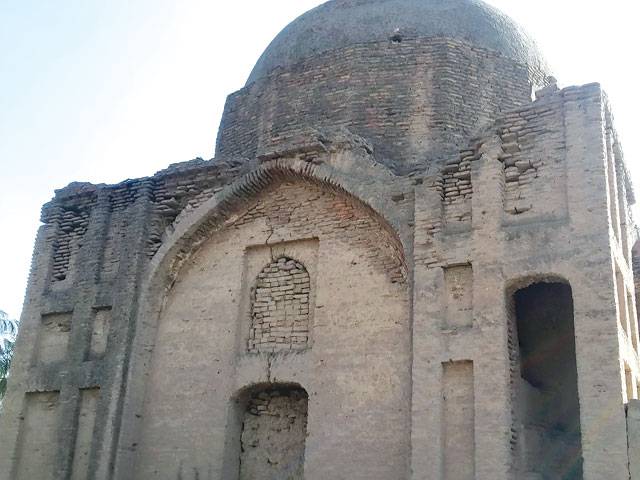PESHAWAR - Unidentified miscreants have exhumed the grave of a famous queen of Durrani empire and have taken away relics from there.
Once popular for her beauty, Bibi Jan was a beloved queen of the second ruler of the Durrani empire, Taimur Shah Durrani. Her tomb, known locally as Beejo Qabar, is located in Durrani graveyard near Wazirbagh, Peshawar. The tomb of Bibi Jan has now been reduced to a ramshackle mausoleum.
A cultural activist, Dr Salah-ud-Din, while giving references from several books on the cultural heritage of KP, told The Nation that Durrani graveyard was one of the several historic graveyards in the province where members of the influential families of the past were buried. He said Peshawar had probably served as the summer capital of Taimur Shah Durrani’s empire. Later, most of his family members were buried in Durrani graveyard, the most visible and popular mausoleum being Bibi Jan’s.
This scribe went inside the tomb to see the damaged portion. The mausoleum which was built in the honour of Bibi Jan has two doors which have been permanently sealed with mud walls. Inside the mausoleum, the grave of Bibi Jan has been dug deep by unidentified persons in search of valuable remnants. This scribe also saw two small graves inside the mausoleum, of which the local people said they were of her birds and that during her lifetime she had asked for burying them near her grave.
Syed Amjad Hussain, a notable historian, has narrated in his book ‘Culture of Peshawar’ that Bibi Jan lived near Wazirbagh more than 200 years ago. According to the book, Bibi Jan and Taimur Shah were in love, which his first queen strongly opposed. The first queen out of jealousy called Bibi Jan as Beejo (monkey); hence her grave was named as Beejo grave by her opponents. It is said that the king’s first wife poisoned Bibi Jan in the absence of the king who started building a mausoleum over her grave, but it could not be completed for unexplainable reasons.
The Durrani graveyard also has the grave of Sardar Muhammad Ayub Khan, the victor of the Battle of Maiwand. A number of relics were stolen from Ayub Khan’s grave in 2010.
Locals walk freely in the family graveyard and Bibi’s burial site. They narrate the love story of Bibi and the king like an ancient tale.
The archaeology department is responsible for the preservation of historic sites, but several ancient graveyards in the province look abandoned.
Locals say a large number of people visit the graveyard to see Bibi Jan tomb and an old mosque of Sheikh Habib Baba, built in Durrani era inside the graveyard. Most of the elders of the area are familiar to the story of Bibi Jan. They add her mausoleum was in a better state and was being visited by foreign tourists in the past.
When asked regarding renovation and repair work in Bibi Jan mausoleum, Abdus Samad, director, Archaeology and Museums, said his department intended to allocate budget for the purpose in the next annual development programme. He, however, complained that the auqaf department was creating hurdles in their way as the site belonged to them. He said in order to do repair work they needed a no-objection certificate from the auqaf department which was not taking care of the graveyard.






